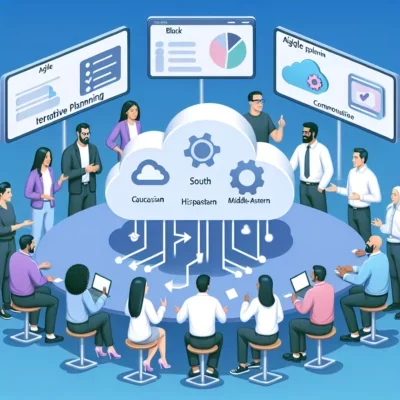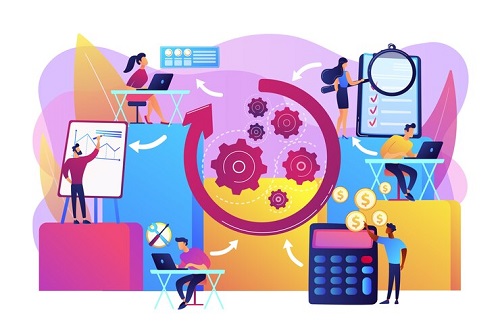In today’s fast-paced digital landscape, the ability to adapt and iterate quickly is crucial for success. Agile methodologies, with their emphasis on flexibility and responsiveness, have become a cornerstone of modern software development. When combined with cloud technologies, they create a powerful synergy that enhances the development process. This blog delves into the world of Agile Cloud, exploring how these methodologies facilitate rapid iteration and adaptation in cloud development.
Understanding Agile Methodologies
Agile methodologies are a set of principles and practices designed to improve the flexibility and efficiency of software development. At their core, they emphasize:
- Individuals and Interactions over processes and tools.
- Working Software over comprehensive documentation.
- Customer Collaboration over contract negotiation.
- Responding to Change over following a plan.
These principles highlight the importance of flexibility and responsiveness, which are particularly crucial in cloud development. The cloud environment is dynamic, with evolving technologies and user requirements. Agile methodologies enable teams to adapt swiftly to these changes, ensuring that cloud solutions remain relevant and effective.
The Agile Manifesto and Cloud Development
The Agile Manifesto, created in 2001, outlines the values and principles that underpin agile methodologies. These include:
- Customer Satisfaction through early and continuous delivery of valuable software.
- Welcome Changing Requirements, even late in development.
- Frequent Delivery of working software.
- Close, Daily Cooperation between business people and developers.
These principles align seamlessly with the needs of cloud development projects, where rapid deployment and iteration are essential. The cloud’s inherent flexibility allows for continuous integration and delivery, making it an ideal environment for agile practices.
Key Principles Supporting Rapid Iteration
Iterative Development
Iterative development is a cornerstone of agile methodologies. It involves a cycle of planning, executing, and reviewing, allowing teams to refine their products continuously. This approach is particularly beneficial in cloud development, where feedback can be quickly incorporated into subsequent iterations.
Incremental Delivery
Delivering small, workable pieces of software incrementally ensures that stakeholders can see progress and provide feedback early and often. This not only reduces risk but also enhances the final product by incorporating real-world user insights.
Continuous Feedback
Stakeholder feedback is invaluable in refining products. Agile methodologies prioritize regular feedback loops, ensuring that the development process is aligned with user needs and expectations. In the cloud environment, where user demands can shift rapidly, this continuous feedback is critical.
Adaptation in Cloud Development
Embracing Change
Agile methodologies encourage adapting to change over following a rigid plan. This is vital in cloud development, where new technologies and user requirements emerge frequently. By embracing change, teams can pivot quickly, ensuring that their solutions remain competitive.
Collaboration and Communication
Effective collaboration and open communication are essential components of agile methodologies. In cloud development, where teams may be distributed across different locations, fostering a collaborative environment is crucial for success. Tools like Slack, Microsoft Teams, and Zoom facilitate this communication, ensuring that everyone is aligned.
Customer-Centric Approach
Agile methodologies prioritize customer needs and feedback, ensuring that the final product meets user expectations. In cloud development, this customer-centric approach is vital, as it allows teams to create solutions that are not only functional but also user-friendly and relevant.
Tools and Practices Enhancing Agile in the Cloud
Automation and CI/CD
Automation plays a critical role in speeding up development cycles. Continuous Integration and Continuous Deployment (CI/CD) pipelines automate testing and deployment, allowing teams to release updates quickly and efficiently. This is particularly beneficial in the cloud, where rapid iteration is key.
Cloud-Native Tools
Cloud-native tools, such as Kubernetes and Docker, support agile practices by providing scalable and flexible environments for development. These tools enable teams to deploy and manage applications efficiently, facilitating rapid iteration and adaptation.
DevOps Integration
DevOps complements agile methodologies by fostering a culture of collaboration between development and operations teams. This integration streamlines processes, reduces bottlenecks, and enhances the overall efficiency of cloud development projects.
Real-World Applications and Success Stories
Numerous organizations have successfully implemented agile methodologies in their cloud development projects. For instance, Spotify uses agile practices to continuously improve its music streaming service, ensuring that it remains competitive in a rapidly changing market. Similarly, Netflix leverages agile methodologies to iterate quickly, delivering new features and improvements to its platform regularly.
These success stories highlight the effectiveness of agile methodologies in cloud development, showcasing the benefits of rapid iteration and adaptation.
The Future of Agile in Cloud Development
As cloud technologies continue to evolve, agile methodologies will play an increasingly important role in development projects. Emerging trends, such as server less computing and artificial intelligence, offer new opportunities for agile practices. However, challenges such as security and data privacy will require careful consideration.
The future of agile in cloud development looks promising, with endless possibilities for innovation and growth. By embracing agile methodologies, organizations can stay ahead of the curve, delivering solutions that meet the ever-changing needs of their users.
In the dynamic world of cloud development, agility is not just an advantage—it’s a necessity. By understanding and implementing agile methodologies, teams can harness the full potential of the cloud, driving innovation and success in an ever-evolving digital landscape.



